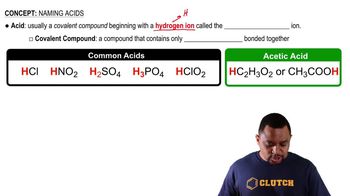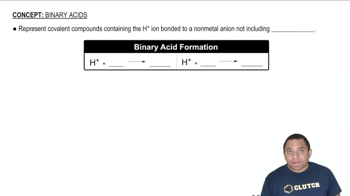Ch.23 - Organic and Biological Chemistry
Chapter 23, Problem 86
What is a fatty acid?
 Verified step by step guidance
Verified step by step guidance1
Step 1: Understand that a fatty acid is a type of lipid, which is a large group of naturally occurring molecules that include fats, waxes, sterols, and fat-soluble vitamins.
Step 2: Recognize that fatty acids are composed of long hydrocarbon chains with a carboxylic acid group (-COOH) at one end.
Step 3: Note that the hydrocarbon chain can vary in length and can be either saturated (no double bonds between carbon atoms) or unsaturated (one or more double bonds).
Step 4: Learn that saturated fatty acids have straight chains, allowing them to pack closely together, which makes them solid at room temperature, while unsaturated fatty acids have kinks in their chains due to double bonds, making them liquid at room temperature.
Step 5: Understand that fatty acids are important in biology as they are key components of lipids, which are essential for building cell membranes and storing energy.
Key Concepts
Here are the essential concepts you must grasp in order to answer the question correctly.
Structure of Fatty Acids
Fatty acids are carboxylic acids with long hydrocarbon chains. They typically consist of a hydrophilic carboxyl group (-COOH) at one end and a hydrophobic hydrocarbon tail, which can vary in length and saturation. The structure influences their physical properties and biological functions.
Recommended video:
Guided course

Acids and Their Structure
Saturation of Fatty Acids
Fatty acids can be classified as saturated or unsaturated based on the presence of double bonds in their hydrocarbon chains. Saturated fatty acids have no double bonds, leading to straight chains that pack tightly, while unsaturated fatty acids contain one or more double bonds, resulting in kinks that prevent tight packing and affect melting points.
Recommended video:
Guided course

Saturated and Unsaturated Hydrocarbons
Biological Role of Fatty Acids
Fatty acids play crucial roles in biological systems, serving as key components of lipids, such as triglycerides and phospholipids, which are essential for cell membrane structure and energy storage. They also participate in signaling pathways and are precursors for bioactive molecules, influencing various physiological processes.
Recommended video:
Guided course

Binary Acids
Related Practice
